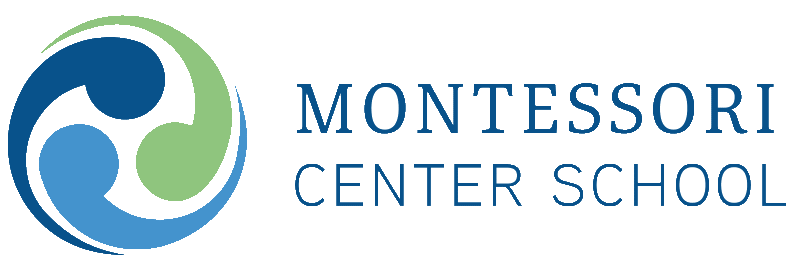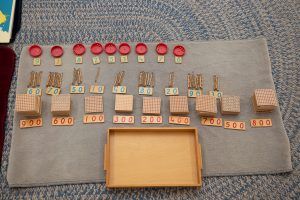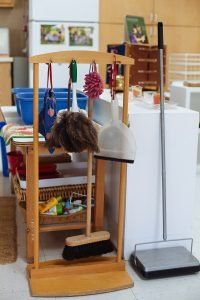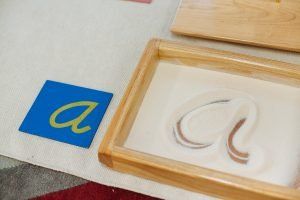Inside the Early Childhood (Primary) Classroom: Ages 3-6
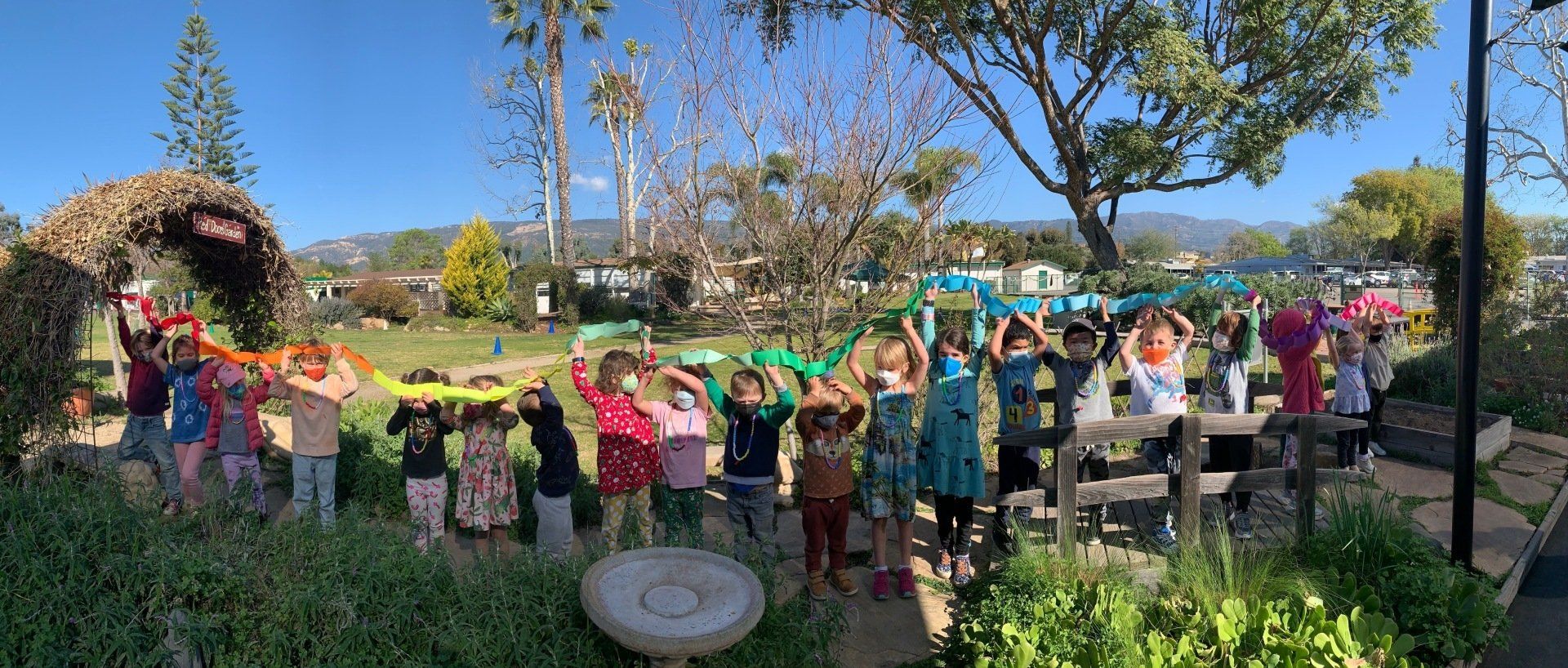
In a Montessori Early Childhood classroom, highly trained teachers create a customized environment crafted to her unique abilities, interests, and learning style.
This approach to learning is “hands-on.” Dr. Maria Montessori believed (and modern science has affirmed) that moving and learning are inseparable. In the prepared classroom, children work with specially designed manipulative materials that invite exploration and engage the senses in the process of learning.
All learning activities support children in choosing meaningful and challenging work at their own interest and ability level. This child-directed engagement strengthens motivation, supports attention, and encourages responsibility.
Uninterrupted blocks of work time (typically 2+ hours in length) allow children to work at their own pace and fully immerse themselves in an activity without interruption. Your child’s work cycle involves selecting an activity, performing it for as long it remains interesting, cleaning up the activity and returning it to the shelf, and making another work choice. This cycle respects individual variations in the learning process, facilitates the development of coordination, concentration, independence, and a sense of order while facilitating your child’s assimilation of information.
A Welcoming Space
A Montessori Early Childhood classroom feels more like a home than a school. You’ll see children happily working individually or in small groups, at tables or on the floor near small mats that delineate their own space.
Specially designed learning materials are displayed on open shelves, easily accessible to the children. Classrooms also include low sinks accessible to the children, child-sized furniture, cozy spaces for quiet reading, reachable shelves with work available for free choice, and child-sized kitchen utensils so the students can eat, prepare, and clean up their snack on their own. Teachers gently guide students to help maintain the organization and cleanliness of this environment to keep it orderly and attractive and to help your child understand how to care for materials and clean up after themselves—skills you will be happy to observe carrying over in your home.
Kindergarten: The Leadership Year
During the first 2 years in an Early Childhood classroom, Montessori students look forward to their turn to be a leader. In their third year—often known as Kindergarten—children get their turn and take pride in being the oldest. They serve as role models for younger students; they demonstrate leadership and citizenship skills. They reinforce and consolidate their own learning by teaching concepts they have already mastered to their peers. In their Kindergarten year, they express confidence, develop self-esteem and self-sufficiency, and show responsibility.
Kindergarteners are introduced to progressively more advanced Montessori materials and sophisticated, fascinating lessons. And they experience an important period in which their previous learning from working with concrete Montessori materials begins to become permanent knowledge. A Montessori Kindergarten student sees and feels their personal growth as they watch others learn the information they have mastered themselves.
Kindergarten is the culmination of the Early Childhood program. Children exhibit the independence, critical thinking, collaboration, and leadership that they have been practicing during their previous years in the Early Childhood classroom, exercising them independently as they prepare to transition into an Elementary program.
What Your Child Will Learn
Teachers carefully observe their children in the Early Childhood environment, identifying their interests and abilities and developing personalized learning plans tailored to each child’s needs. They guide the learning, introducing new lessons and levels of difficulty as appropriate. The teacher offers the encouragement, time, and tools needed to allow children’s natural curiosities to drive learning, and provides choices that help them learn, grow, and succeed.
After participating in a demonstration of a material from a teacher, your child is free to choose activities and to work on her own or with a partner for as long as she wishes. Since there is usually only one of each material, your child will develop patience and self-control as she waits for a material to become available.
The Montessori Early Childhood curriculum follows a 3-year sequence. Because the teacher guides your child through learning at her own pace, her individualized learning plan may exceed the concepts she would be taught in a classroom environment in which all children learn the same concept at the same time.
As children move forward, they develop the ability to concentrate and make decisions, along with developing self-control, courtesy, and a sense of community responsibility.
In Montessori schools, academic growth is seen as just one part of children’s healthy development. The method nurtures their social, emotional, and physical growth, ensuring that they are, as Dr. Maria Montessori put it, “treading always in the paths of joy and love.”
The Curriculum
The Early Childhood classroom offers your child 5 areas of study: Practical Life, Sensorial, Math, Language, and Cultural Studies. What are the lessons in these areas?
Practical Life
Children learn daily-life skills, such as how to get dressed, prepare snacks, set the table, and care for plants and animals. They also learn appropriate social interactions, such as saying please and thank-you, being kind and helpful, listening without interrupting, and resolving conflicts peacefully. In addition to teaching specific skills, Practical Life activities promote independence, and fine- and gross-motor coordination.
Sensorial
Children refine skills in perceiving the world through their different senses, and learn how to describe and name their experiences—for example, rough and smooth, perceived through touch. Sensorial learning helps children classify their surroundings and create order. It lays the foundation for learning by developing the ability to classify, sort, and discriminate—skills necessary in math, geometry, and language.
Math
Through hands-on activities, children learn to identify numerals and match them to their quantity, understand place-value and the base-10 system, and practice addition, subtraction, multiplication, and division. They also explore patterns in the numbering system. With an exploratory approach, children do more than just memorize math facts; they gain a firm understanding of the meaning behind them.
Language
Activities throughout the Early Childhood classroom teach language, help children acquire vocabulary, and develop skills needed for writing and reading. The ability to write, a precursor to reading, is taught first. Using hands-on materials, children learn letter sounds, how to combine sounds to make words, how to build sentences, and how to use a pencil. Once these skills are acquired, children spontaneously learn to read.
Cultural Studies
A wide range of subjects, including history, geography, science, art, and music, are integrated with lessons in the cultural area of the curriculum. Children learn about their own community and the world around them. Discovering similarities and differences among people and places helps them develop an understanding and appreciation of the diversity of our world, and a respect for all living things.
Text Source: American Montessori Society
Programs
Montessori Center School admits students of any race, color, religion, national and ethnic origin, gender identity, and sexual orientation to all rights, privileges, programs and activities general recorded or made available to students at the School. It does not discriminate on the basis of race, color, religion, national and ethnic origin, gender identity or sexual orientation in the administration of its educational programs, admission and tuition assistance policies, and athletic or other school-administered programs. Non-Profit Education Organization, License No. 426205239
